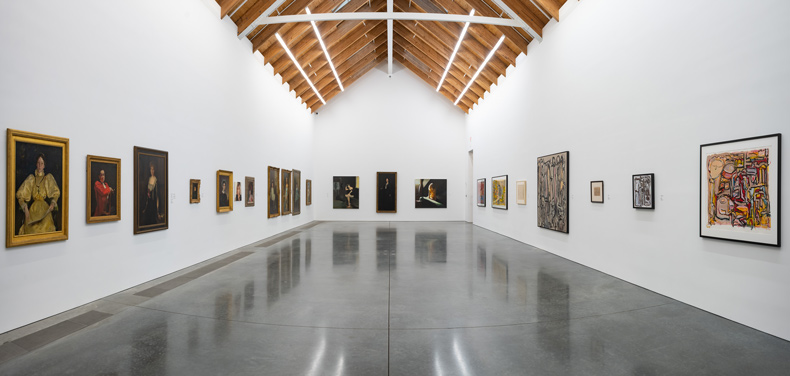From the July/August 2023 issue of Apollo. Preview and subscribe here.
Alongside their reputation as a place for hedonism and summer pleasure parties, the Hamptons have had a contradictory reputation, as a calm and quiet retreat for artists. The most glittering names associated with the area are, of course, Abstract Expressionists: Jackson Pollock, Mark Rothko and Willem de Kooning. In fact, painters’ interest in the place started well before they arrived. According to Mónica Ramírez-Montagut, director of the Parrish Art Museum, ‘the first open air schools of painting’ in the United States were based in the Hamptons in the 19th century.
This will not surprise anyone familiar with the Parrish, which holds the largest collection of works by William Merritt Chase (1849–1916). It did not start out this way. ‘The museum has pivoted completely about three times in its history,’ says Ramírez-Montagut, who joined the museum in July 2022, after the surprise departure of former director Kelly Taxter who had been in the job less than a year. It began as a museum of the Italian Renaissance, full of replica friezes and Renaissance paintings collected by Samuel Parrish, a New York lawyer. The next chapter began in the 1930s, when the board of the museum recognised the importance of American artists, which led the institution to form relationships with local artists and shifted it to what Ramírez-Montagut calls ‘an American model’. The third shift, as Parrish celebrates its 125th anniversary, has been to locate that American model of art within a wider story and show how this quiet region outside New York City has ‘a global impact and weaves into an international narrative’.
Monica Ramírez-Montagut. Photo: Jenny Gorman

This is not to say that New York does not exert some influence on the quieter region of the Hamptons. ‘We are considered to be a New York City museum,’ Ramírez-Montagut says. Many of the area’s summer visitors are interested in art, too, and the Parrish Art Museum has become something of a focus of their attention. Its most recent incarnation is in a building by the not unglamorous Herzog and de Meuron. This all suggests a certain luxe chic to proceedings at the Parrish. Yet this is only part of the audience for part of the year.
In fact, the Parrish is in an area that, Ramírez-Montagut says, contains a lot of people who live under the poverty line. ‘The majority of school students in the area are Hispanic. It is a somewhat segregated community.’ It is against this context that she talks, in terms familiar from museums’ communications departments around the world, of ‘the desperate need to serve underserved communities’. This is not just about doing good works, but about sustaining an audience around the year; and it does not, she says, imply a reduction in the quality of what the Parrish does: ‘I think that there is a confusion between trying to be accessible and folks complaining that we are dumbing down. That is not the case. Not everybody has a PhD and it’s very helpful when someone gives you a hand,’ Ramírez-Montagut says. But she also counsels that ‘the journey to equity is a long one.’ The challenges she faces are not unique to the Parrish Art Museum and Ramírez-Montagut offers more concrete solutions than some of her peers, which have included presenting a bilingual Frida Kahlo exhibition, ensuring that there is large-font signage and providing places to sit for elderly visitors or family packs for families. After all, ‘between 60 and 70 per cent of our audiences are first-time visitors and so we need to make sure they feel welcome.’
Works selected by Eric Fischl in the ‘Artists Choose Parrish’ exhibition. Photo: Gary Mamay

For the 125th anniversary celebrations, the museum is asking locally based artists such as Cindy Sherman, Eric Fischl and Ugo Rondinone to choose pieces from the collection, and it is deftly using its rootedness in the community to present wider views of the museum’s artworks. It’s an elegant solution to the problem of how to make a big noise from a little museum, leveraging high-profile relationships to deliver something fresh and new. But this is really one step in the broader project whereby Ramírez-Montagut has begun to spread the museum’s collection to a much wider audience. As she puts it, ‘People can say, “Don’t go ahead with these strategies,” but the fact is that if we don’t, this museum is not going to be relevant in 50 or a hundred years.’
From the July/August 2023 issue of Apollo. Preview and subscribe here.



